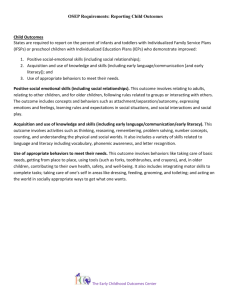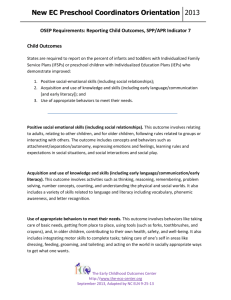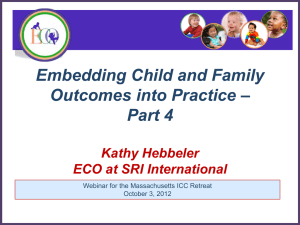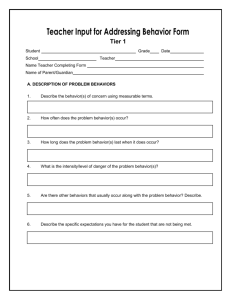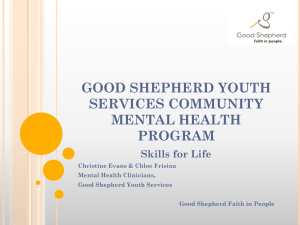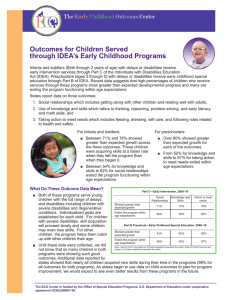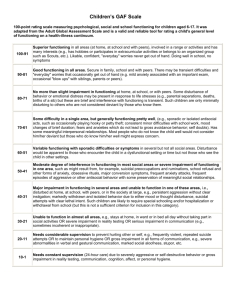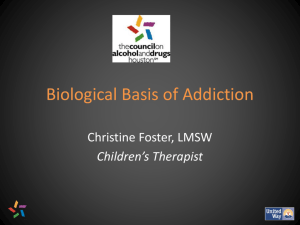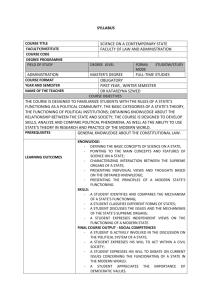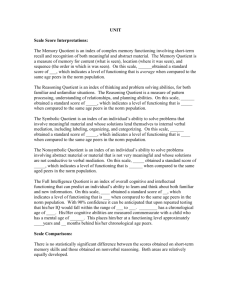dataworkshopcheatsheet
advertisement
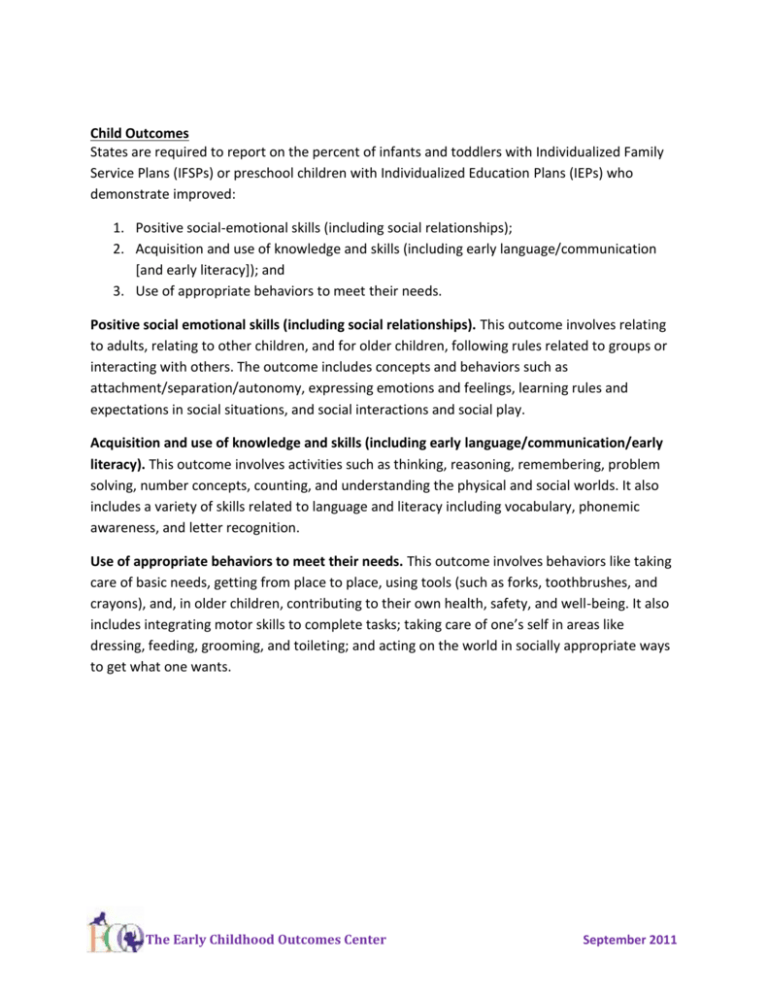
Child Outcomes States are required to report on the percent of infants and toddlers with Individualized Family Service Plans (IFSPs) or preschool children with Individualized Education Plans (IEPs) who demonstrate improved: 1. Positive social-emotional skills (including social relationships); 2. Acquisition and use of knowledge and skills (including early language/communication [and early literacy]); and 3. Use of appropriate behaviors to meet their needs. Positive social emotional skills (including social relationships). This outcome involves relating to adults, relating to other children, and for older children, following rules related to groups or interacting with others. The outcome includes concepts and behaviors such as attachment/separation/autonomy, expressing emotions and feelings, learning rules and expectations in social situations, and social interactions and social play. Acquisition and use of knowledge and skills (including early language/communication/early literacy). This outcome involves activities such as thinking, reasoning, remembering, problem solving, number concepts, counting, and understanding the physical and social worlds. It also includes a variety of skills related to language and literacy including vocabulary, phonemic awareness, and letter recognition. Use of appropriate behaviors to meet their needs. This outcome involves behaviors like taking care of basic needs, getting from place to place, using tools (such as forks, toothbrushes, and crayons), and, in older children, contributing to their own health, safety, and well-being. It also includes integrating motor skills to complete tasks; taking care of one’s self in areas like dressing, feeding, grooming, and toileting; and acting on the world in socially appropriate ways to get what one wants. The Early Childhood Outcomes Center September 2011 Progress Categories For OSEP states are required to report on five categories of progress for each of the three child outcomes: 1. Children who did not improve functioning. 2. Children who improved functioning but not sufficient to move nearer to functioning comparable to same aged peers. 3. Children who improved functioning to a level nearer to same aged peers but did not reach it. 4. Children who improved functioning to reach a level comparable to same aged peers. 5. Children who maintained functioning at a level comparable to same aged peers. Summary Statements For OSEP states are required to report on two summary statements for each of the three child outcomes: Summary Statement 1 : Of those children who entered the program below age expectations in each Outcome, the percent who substantially increased their rate of growth by the time they exited the program. Summary Statement 2 : The percent of children who were functioning within age expectations in each Outcome by the time they exited the program. The Early Childhood Outcomes Center September 2011
